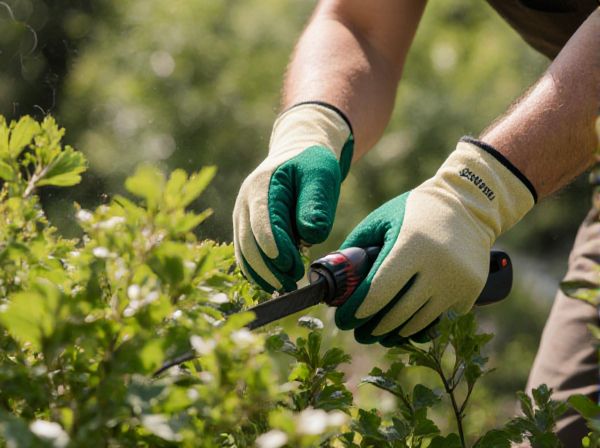
Renewal pruning vs maintenance pruning Illustration
Renewal pruning involves removing older, unproductive branches to stimulate new growth and improve the overall health of the plant, while maintenance pruning focuses on trimming away dead or diseased parts to maintain plant shape and vigor. Renewal pruning is typically performed less frequently and encourages rejuvenation, whereas maintenance pruning is a regular task that helps prevent damage and promotes continuous growth. Understanding the balance between these pruning types ensures optimal plant development and longevity.
Table of Comparison
| Aspect | Renewal Pruning | Maintenance Pruning |
|---|---|---|
| Purpose | Revitalize aging or overgrown plants | Preserve plant health and shape |
| Frequency | Infrequent (every few years) | Regular (annual or seasonal) |
| Intensity | Heavy cutting, removing large portions | Light trimming, removing small parts |
| Target Parts | Old, diseased, or overcrowded branches | Dead, damaged, or crossing branches |
| Benefits | Stimulates new growth, improves vigor | Maintains structure, enhances appearance |
| Best Time | Late winter or early spring | Throughout growing season |
Understanding Renewal Pruning and Maintenance Pruning
Renewal pruning involves the strategic removal of older, unproductive branches to stimulate new growth and rejuvenate a plant's overall structure, essential for long-term health and productivity. Maintenance pruning focuses on routine trimming to remove dead, diseased, or damaged limbs, ensuring plant safety and aesthetic appeal while promoting optimal air circulation and sunlight penetration. Understanding the distinct goals and timing of renewal versus maintenance pruning helps optimize plant vitality and growth cycles.
Key Differences Between Renewal and Maintenance Pruning
Renewal pruning targets older, overgrown branches to stimulate vigorous new growth and extend the life of the plant, often involving significant cuts close to the main stems. Maintenance pruning focuses on routine trimming to remove dead, diseased, or crossing branches, preserving the plant's shape and health with minimal stress. The primary difference lies in renewal pruning's revitalizing intent versus maintenance pruning's goal of sustaining overall plant condition.
When to Choose Renewal Pruning
Renewal pruning is essential when managing older trees with dense, overgrown branches to restore vitality and promote new growth. It is chosen when structural issues or significant deadwood are present, requiring more extensive cuts compared to maintenance pruning. Maintenance pruning targets ongoing care to preserve tree health, whereas renewal pruning resets growth cycles, improving long-term canopy development.
When to Opt for Maintenance Pruning
Maintenance pruning is ideal during active growing seasons when the goal is to remove dead or diseased branches and improve air circulation without significantly altering the plant's structure. Opt for maintenance pruning to preserve the health of established trees or shrubs, ensuring they maintain their natural shape while preventing potential damage. This type of pruning promotes sustained plant vigor and reduces stress, especially in mature landscapes.
Tools Required for Renewal vs Maintenance Pruning
Renewal pruning requires heavier-duty tools such as loppers, pruning saws, and in some cases, chainsaws to remove older, larger branches and reinvigorate plant growth. Maintenance pruning typically uses lighter tools like hand pruners and bypass shears to trim smaller shoots and maintain plant shape. Selecting the appropriate tools ensures clean cuts, reduces plant stress, and improves overall pruning efficiency.
Step-by-Step Guide to Renewal Pruning
Renewal pruning involves selectively removing older, less productive branches to stimulate new growth and enhance overall tree health. Begin by identifying and cutting back one-third of the oldest wood at the base to encourage vigorous shoots. Continue monitoring periodically to gradually replace aged branches while maintaining the tree's structure and vitality.
Step-by-Step Guide to Maintenance Pruning
Maintenance pruning involves systematically removing dead, diseased, or overgrown branches to promote the health and structure of plants, typically performed annually. Begin by inspecting the plant for compromised limbs, use clean, sharp tools to make precise cuts just above growth nodes, and ensure proper disposal of pruned material to prevent disease spread. Prioritizing maintenance pruning extends the lifespan of plants, enhances air circulation, and supports ongoing growth without the drastic cuts associated with renewal pruning.
Common Mistakes in Renewal and Maintenance Pruning
Common mistakes in renewal pruning include removing too much live wood, which weakens tree structure and reduces vigor, and neglecting proper timing, leading to stress and poor regrowth. In maintenance pruning, errors often involve excessive crown thinning that exposes inner branches to sun damage, and failing to remove dead or diseased wood promptly, increasing the risk of pest infestations. Both pruning types require knowledge of species-specific growth patterns and appropriate cut techniques to ensure tree health and longevity.
Best Plants for Renewal Pruning vs Maintenance Pruning
Renewal pruning is best suited for mature, overgrown plants like lilacs, hydrangeas, and butterfly bushes, which benefit from rejuvenation by cutting back old wood to encourage new growth. Maintenance pruning is ideal for shrubs and trees such as boxwoods, azaleas, and fruit trees, where selective trimming maintains shape, health, and productivity without drastic cutting. Choosing the right type of pruning depends on the plant species, age, and growth habit to optimize plant vitality and appearance.
Long-Term Benefits of Proper Pruning Techniques
Renewal pruning stimulates vigorous new growth by removing older, less productive branches, enhancing tree health and fruit production over time. Maintenance pruning preserves structural integrity and prevents disease, ensuring sustained vitality and safety. Proper execution of both techniques maximizes long-term orchard yield and tree lifespan, promoting sustainable horticultural practices.
Renewal pruning vs maintenance pruning Infographic

 gardendif.com
gardendif.com